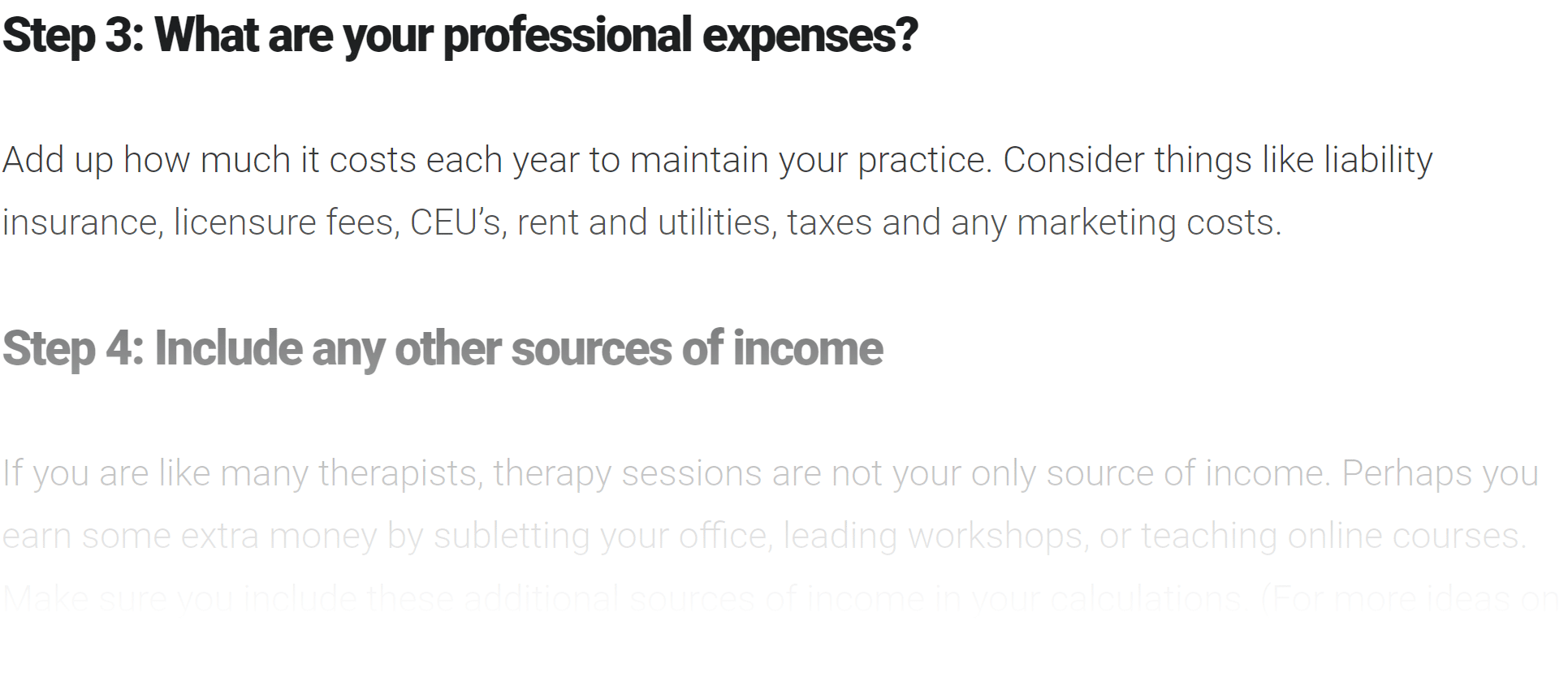Money is a fraught subject for most people, but research indicates that therapists have a particularly hard time talking about finances. After all, most of us were drawn to the profession for altruistic reasons, not to “get rich.” But just because we are a compassionate, morally-guided bunch doesn’t mean we are not entitled to financial stability.
On the contrary, if your current fee structure is such that you can’t afford to take time off or participate in other self-care activities, you risk resentment and burnout.
So, how do you set a fee that is both reasonable and reflective of your professional worth? Experts recommend figuring out how much money you need to thrive both personally and professionally, then working backward to establish your rates.
Step 1: Assess your annual cost of living
How much does it cost to afford your current lifestyle? Are there luxuries that you would like to afford going forward that you haven’t previously? Consider things like travel, dinners out, gym memberships, entertainment, and any other important contributors to your quality of life.
Step 2: Consider your ideal schedule
How many clients do you want to see per day/ week? How much time off do you want to take each year? Is it important that your schedule be flexible so that you can attend your kids’ sporting events or attend to family obligations? Answering these questions will help you set a target number of clinical hours.

Keep Reading
Want more? Here are some other blog posts you might be interested in.









